Young adult fiction focusing on LGBT characters was a really depressing genre for a very long time.
A majority of books in this genre focused on tragic, but unfortunately realistic stories of LGBT teenagers. They accepted who they were, maybe found a significant other, were kicked out of their home by their parents, and they moved on with their life. In the mid-2000s, “Boy Meets Boy” by David Levithan felt nearly revelatory simply because it had a happy ending. The boy got the boy and there was very little bigotry involved.
Levithan’s oeuvre continues to be one of the more optimistic entries in LGBT young adult fiction, although there are increasingly more novels being written about teens who identify as LGBT who get a happy ending. In a manner similar to “Boy Meets Boy,” there’s something oddly refreshing about “Simon vs. the Homo Sapiens Agenda” by Becky Albertalli, which was published in 2015. Even though the premise comes across as a little intense–Simon, a closeted gay teenager, finds himself falling in love with a pseudonymous pen pal known as “Blue,” but his emails to Blue are discovered by another student, who blackmails him–it feels like an effervescent book with an incredibly happy ending. Reading it to me felt like being wrapped up in a comfortable blanket and watching my go-to comfort food movies or clips of American Treasure Robert Preston performing. (None of the books I read repeatedly are particularly cheery, although I do get an immense delight over Dante’s descriptions of how popes are tortured in hell.)
Albertalli’s novel is the basis for the movie “Love, Simon,” which was released last month. The big news with the film is it’s the first film released by a major studio (20th Century Fox) to focus on a gay teenage romance. While there has been some criticism and reflection on the fact there’s a heavy emphasis on how Simon is an average guy–a monologue that brought to mind a short speech Nathan Lane gives in “The Birdcage” while wearing a suit as an attempt to seem more masculine–as well as how Simon is seemingly contrasted to Ethan, another gay student, the movie does present itself as very approachable, which is arguably good as it had a wide-release and is being distributed internationally.
This approach also presents a gay man who does not fit into the feminine stereotypes assigned to most queer male characters in major projects. To my mind, the only other lead queer male characters in major screen projects who hew closer to masculine gender norms are Will on “Will and Grace” (more on that later), Jack and Ennis in “Brokeback Mountain” and Armond in “The Birdcage,” and even his character wore foundation, owned a drag club, and did an incredibly kinetic bit of dance choreography. As deeply frustrating as it is to have yet another major studio project focusing on a gay man who is portrayed as fitting in more with male gender norms, it is worth noting it does go against the overwhelming portrayal of gay men being incredibly feminine, which oddly feels like a form of progress, even if it simultaneously comes off as regressive to have a character trumpeting his averageness.
More startling is the fact the film does have a happy ending. If you look just at the more significant LGBT-focused films released recently–“Carol,” “Moonlight,” and “Call Me By Your Name”–two of them end with ambiguous endings and one ends with a devastating scene. Even if the end of “Love, Simon” is interpreted as ambiguous, it still feels more uplifting than the final moments of “Carol” and “Moonlight” because, in the world of the teen movie, we assume the couple at the center finds happiness and stays together forever. It’s aspirational, while in adulthood we start to realize how much harder life is.
One of the main reasons why I loved it was because it feels like there are still very few happy storylines given to LGBT characters on screen. Even though there’s an increasing amount of LGBT characters in television and movies, they are often secondary characters. There are still plotlines about characters struggling with their identity, which isn’t a bad thing since Simon not being out is one of the things that drives the plot of “Love, Simon” and questioning your sexual orientation or gender identity can be done deftly, as in the case of “Brooklyn Nine-Nine,” “Crazy Ex-Girlfriend”, and “Transparent,” all of which have multiple LGBT characters.
This isn’t nearly as TV shows still killing off gay characters, particularly lesbians, a trope the website Autostraddle memorialized in enamel pin form. With the recent love of rebooting and reviving TV shows, there have also been more outdated portrayals of gay men. “Will and Grace” brought back with it the butch-femme dynamic of friends Will Truman and Jack McFarland. “The Tick” had an unfortunate subplot where the gay sentient Artificial Intelligence on a weaponized boat has a crush on another character and sexually assaults him, which is played for laughs. (I have not seen any episodes of the “Roseanne” revival and cannot comment on the gender non-conforming character.) While one of these is much more troubling than the other, the way Will and Jack are portrayed on the show, even if it seems outdated, is wildly viewed to have helped make most of America more accepting of gay people. It was there on network television and in a way that felt palatable to most people.
“Will and Grace” wasn’t the cultural pieces that told me it was okay to be gay–those would be “Victor/Victoria” and “Six Feet Under”–it likely helped teenagers struggling with their sexuality to realize they too could have a future and be successful in life, even though the masculine Will is the one portrayed as having the steady career. In the time between the original finale for “Will and Grace” and its return, LGBT representation in the media seems to have grown and characters can now even be found on shows on Disney Channel and Cartoon Network. We have also seen the rise of social media, which ultimately does connect people with similar interests, and an expansion of how people can consume stories with streaming platforms and podcasts.
On the podcast “The Adventure Zone,” brothers Justin, Travis, and Griffin McElroy, along with their father, Clint, get together to record themselves playing roll-playing games, which results in a gripping piece of storytelling. The four hosts routinely have characters, both playable and NPCs, in their role-playing campaigns who are canonically not straight white men like themselves. In the first season of “The Adventure Zone,” the Balance Arc, one of the three main characters, Taako, was an aloof gay wizard who dressed in a feminine manner but used he/him pronouns. Throughout the series, there are multiple lesbian characters who are often more competent than the main trio. More impressive than the inclusion of these characters is the dedication of the McElroys to listen to the constructive feedback from the podcast’s fans regarding the representation of marginalized people on the show. It is one thing to have diverse characters in storytelling, it is another thing to do it well, something a lot of writers still struggle to do.
As the arc continued, listeners met Taako’s sister, Lup, who is a transgender woman. Lup is an unapologetic badass who will hurl a fireball without blinking an eye, a contrast to her brother. While there tends to be a narrative around trans people having them adhere strictly to the gender norms matching their identity, the podcast presents a character who is simply allowed to be herself, without any criticism. It provides people listening another positive representation of transgender women, further reflecting the world we actually live in, despite it being set in a fantasy world.
What is even more heartening is Lup is seemingly a fan-favorite and a frequent subject of fanart and cosplay. This means it is quite possible to create a well-rounded LGBT character who fits outside of the standard characterization and have them embraced by fans. There is, of course, a huge difference between a podcast, albeit a very popular one–Travis, Justin, and Griffin McElroy also host the immensely popular podcast “My Brother, My Brother, and Me”–and a TV show on a major network or a movie released by a major studio. If “The Adventure Zone” was less successful than it is, there is significantly less loss posed to the McElroys and Maximum Fun, the podcast’s distributor, than a movie studio or TV network that spends millions of dollars on a project. But it means it can be done and should be done. (It is worth noting Sara Ramirez is currently playing a masculine-of-center bisexual character on CBS’ “Madame Secretary”)
Seeing as how “Love, Simon” performed very well at the box office, it would be nice to see major studios releasing movies focused on LGBT characters, even making those portrayals more diverse. This can come in a variety of forms, be it race, disability, or gender expression. But at the same time, there should be a hopefulness to the stories presented, something being done increasingly well in media. Let LGBT characters have a happy ending because it allows real people to see everything will be okay.
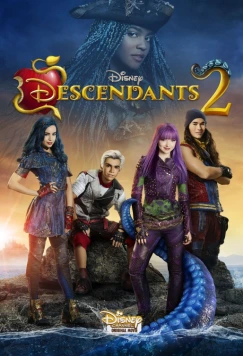 Everything is awful in this world, so it seemed like a good idea to indulge in what is my pop culture guilty pleasure.
Everything is awful in this world, so it seemed like a good idea to indulge in what is my pop culture guilty pleasure.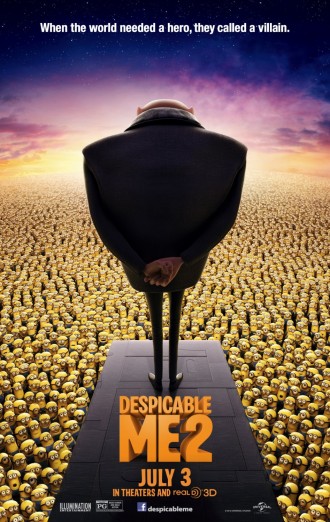 I kept thinking during “The Book of Henry” about how the film seemed to not understand how people work. More importantly, it felt like it didn’t know how children behave, particularly at different ages. The movie used the broad brush of having all of the children either precocious or cute in an age inappropriate way.
I kept thinking during “The Book of Henry” about how the film seemed to not understand how people work. More importantly, it felt like it didn’t know how children behave, particularly at different ages. The movie used the broad brush of having all of the children either precocious or cute in an age inappropriate way.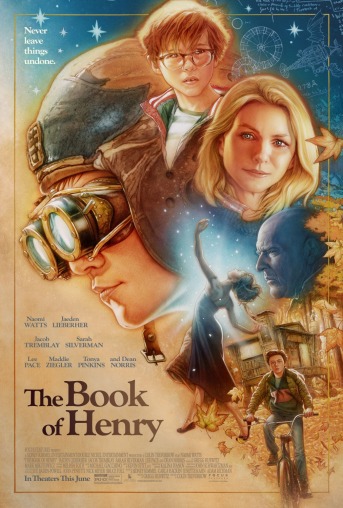 It’s rare that movies in this series result in me actually saying, “I can’t believe I just watched that.” “Divergent” certainly made me say that, as did the end credits of “Catch Hell.” But as I was walking to my car after seeing “The Book of Henry,” I actually said, “I can’t believe I just watched that.”
It’s rare that movies in this series result in me actually saying, “I can’t believe I just watched that.” “Divergent” certainly made me say that, as did the end credits of “Catch Hell.” But as I was walking to my car after seeing “The Book of Henry,” I actually said, “I can’t believe I just watched that.”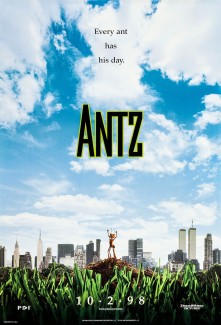 Dreamworks must be one of the most successful companies to be the result of a feud.
Dreamworks must be one of the most successful companies to be the result of a feud.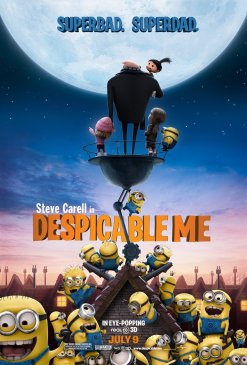 Despite having a very clear affection for most animated movies, I failed to see “Despicable Me” until recently. I actually don’t remember it being released in 2010, possibly because I was busy working on moving back to Chicago and trying to emotionally recover from “Toy Story 3.”
Despite having a very clear affection for most animated movies, I failed to see “Despicable Me” until recently. I actually don’t remember it being released in 2010, possibly because I was busy working on moving back to Chicago and trying to emotionally recover from “Toy Story 3.”

 Once upon a time, in the year 2012, a film called “Snow White and the Huntsman” was released in a year where the world received two Snow White films–the other was “Mirror, Mirror.” The film earned almost $400 million worldwide and in an ivory tower, executives at Universal Pictures decided to greenlight a sequel. After a bit of complications, production on the film began and almost four years after the release of “Snow White and the Huntsman,” “The Huntsman: Winter’s War” was released.
Once upon a time, in the year 2012, a film called “Snow White and the Huntsman” was released in a year where the world received two Snow White films–the other was “Mirror, Mirror.” The film earned almost $400 million worldwide and in an ivory tower, executives at Universal Pictures decided to greenlight a sequel. After a bit of complications, production on the film began and almost four years after the release of “Snow White and the Huntsman,” “The Huntsman: Winter’s War” was released. I don’t own a TV and it’s not something I go around bragging about as if I’m the coolest person you know. I could probably fit a TV somewhere in my apartment if I got rid of a bookcase (unlikely) or my desk, but until then, there’s simply not any space. As a result, I don’t have cable and all TV I consume is watched on my laptop.
I don’t own a TV and it’s not something I go around bragging about as if I’m the coolest person you know. I could probably fit a TV somewhere in my apartment if I got rid of a bookcase (unlikely) or my desk, but until then, there’s simply not any space. As a result, I don’t have cable and all TV I consume is watched on my laptop.